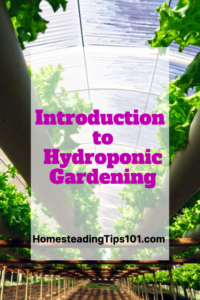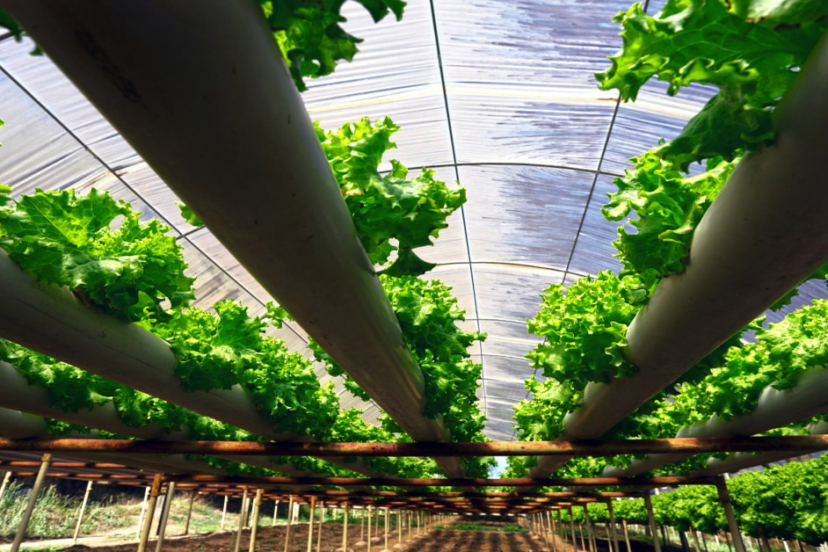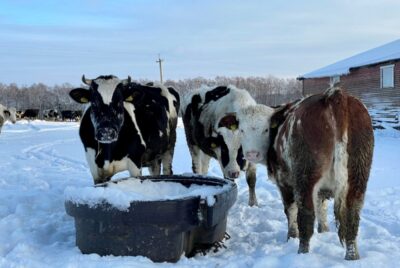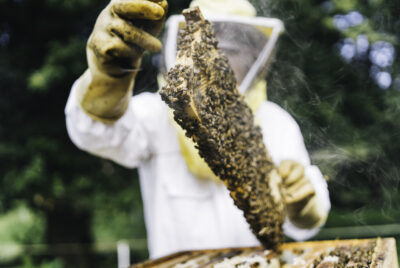Introduction to Hydroponic Gardening
"We may earn a commission from purchases made using our links. Please see disclaimer."
Hi friends! As a long-time hydroponic gardening enthusiast, I’m excited to share my knowledge about this amazing way to grow productive, beautiful plants without soil. Hydroponics offers many advantages over traditional gardening, and I hope this article will inspire you to give it a try. Let’s get started!
What is Hydroponic Gardening?
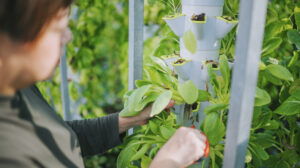 Hydroponics is a method of growing plants using mineral nutrient solutions in water, without soil. The roots are usually supported using inert mediums like perlite, gravel, or coco coir. The nutrients are delivered directly to the roots, allowing the plants to grow up to 50% faster than in soil. The word “hydroponics” comes from the Greek words for water (“hydro”) and labor (“ponos”).
Hydroponics is a method of growing plants using mineral nutrient solutions in water, without soil. The roots are usually supported using inert mediums like perlite, gravel, or coco coir. The nutrients are delivered directly to the roots, allowing the plants to grow up to 50% faster than in soil. The word “hydroponics” comes from the Greek words for water (“hydro”) and labor (“ponos”).
Hydroponics is more than just a novel way to grow plants – it’s an innovative, ultra-efficient agricultural process. By removing the need for soil, hydroponic gardeners gain precise control over the root environment inside growing containers of all shapes and sizes. This includes regulating temperature, pH, oxygen, moisture levels, and nutrient concentrations to optimize plant growth and yield. Hydroponics makes previously unfarmable land productive, uses 10 times less water than soil farming, grows 30-50% faster, and achieves up to 20% higher yields for many crops.
The future of sustainable food production lies in hydroponics and controlled environment agriculture.
Benefits of Hydroponic Gardening
There are so many reasons to love hydroponic gardening! First, you can grow plants anywhere since you don’t need good quality soil. Hydroponics also conserves water, uses less space, and eliminates weeds, pests, and diseases that affect soil-grown plants. You have complete control over the plant’s nutrient intake, leading to faster growth and larger yields. Plus, no digging in the dirt required!
In addition, hydroponic gardening allows for year-round produce growth regardless of your climate. The enclosed, controlled system protects plants from temperature swings, drought, flooding, and wildlife. With the right lighting setup, you can grow all kinds of fruits, vegetables, and herbs that normally have short seasons or won’t survive your winter. Hydroponic gardening also takes up less space compared to traditional gardening, making it perfect for small yards or even apartments. The vertical growing systems allow you to maximize every square foot!
Getting Started with Hydroponics
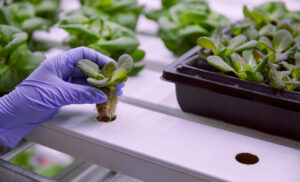 Hydroponic systems can be super simple or quite complex. For beginners, I recommend starting with a small hobby system made from inexpensive materials. This will allow you to learn the basics without a huge investment. Focus on an easy-to-grow crop like lettuce or herbs, to begin with. Don’t be afraid to experiment and tweak your system until you get it right! The learning process is part of the fun.
Hydroponic systems can be super simple or quite complex. For beginners, I recommend starting with a small hobby system made from inexpensive materials. This will allow you to learn the basics without a huge investment. Focus on an easy-to-grow crop like lettuce or herbs, to begin with. Don’t be afraid to experiment and tweak your system until you get it right! The learning process is part of the fun.
When getting started with hydroponics, do your research to understand the basic components you’ll need – growing chambers, lighting, irrigation system, nutrients, and pH buffers. There are many different types of hydroponic systems, like deep water culture, nutrient film technique, aeroponics, ebb and flow, and drip systems that work well for different situations.
Consider your budget, available space, technical skills, and desired crops to decide which system is right for you. Start small with just a few plants, learn as you go, and expand when you feel more confident. Having patience and accepting some failed attempts early on is all part of the process. The rewards of harvesting homegrown, hydroponic produce make it all worthwhile.
Setting Up Your Hydroponic System
Picking the right hydroponic system and getting it put together the right way is key to success. Here’s how to do it:
Choosing a Hydroponic System
There are 6 main types of hydroponic systems to choose from:
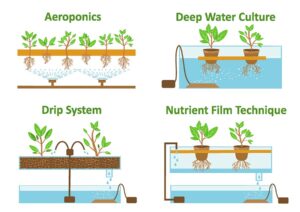
- Wick systems (a reservoir and wicks deliver nutrients)
- Deep water culture (DWC – plant roots hang directly in the nutrient solution)
- Ebb and flow (flood tray – roots get “flooded” and then “drained” periodically)
- Drip systems (a timer releases the nutrient solution to each plant as needed)
- N.F.T. (nutrient film technique – a thin film of nutrients is recirculated over the roots)
- Aeroponics (roots are misted with a nutrient solution)
I suggest beginners start with either a wick system or DWC since they are the simplest options. Make sure to get a system that is the right size for the number of plants you want to grow.
Finding the Right Location
Find a spot that gets 14-16 hours of light daily and has access to electrical outlets and water. A greenhouse, sunny window, patio, or basement are great locations. Make sure the area stays between 65-75°F for most fruits and veggies.
Setting Up the Hydroponic Equipment
Once you’ve picked your system type, assemble the hydroponic components according to the manufacturer’s instructions. Here are a few tips:
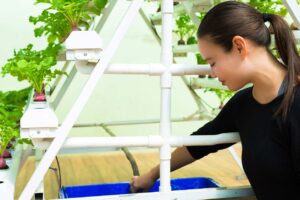
- Use a reservoir that is opaque to block light and prevent algae growth.
- Set up the pump, tubing, and any water emitters needed.
- Rinse the growing mediums before adding plants to remove dust.
- Test that water flows smoothly through the system before planting.
- Place your system in the selected spot and level it.
- Give your setup a test run to identify any issues before planting.
Take your time setting up the equipment properly – it will pay off later!
Selecting Plants for Hydroponics
One of the joys of hydroponic gardening is that you can successfully grow so many types of plants. Here are some top choices for beginners:
Best Vegetables for Hydroponics
Many vegetables thrive in hydroponic systems. I recommend starting with any of these easy,
fast-growing crops:
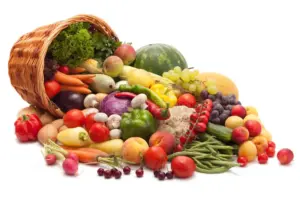
- Lettuce – Grows rapidly, choice of leafy or head varieties. Great for salads!
- Tomatoes – So flavorful when vine-ripened. Go for determinate types.
- Peppers – Prolific plants, grow hot or sweet varieties.
- Cucumbers – Produce well in a small space. Pick frequently.
- Spinach, kale, chard – Nutrient-rich and cold-hardy.
- Beans, peas – Pole types grow vertically to maximize space.
Best Herbs for Hydroponics
Herbs are extremely easy to grow hydroponically. I especially love:
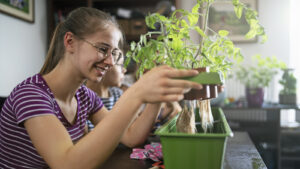
- Basil – Use in recipes all season long. Pinch flowers to prolong the harvest.
- Parsley – Curly leaf gives great flavor to dishes.
- Oregano, thyme, sage – Essential Mediterranean herbs.
- Mint – Grow separately in its own container since it spreads.
- Cilantro – Sow every 2-3 weeks for continual harvests. Bolts quickly.
Plus you can grow chives, rosemary, dill, fennel, and more!
Best Fruits for Hydroponics
Hydroponically grown fruits often have a superb flavor. Recommended for beginners:
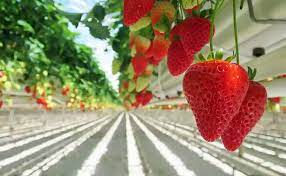
- Strawberries – Day-neutral types will fruit all season. Use net pots.
- Blueberries – Require acidic conditions but produce heavily.
- Raspberries, and blackberries -Place in net pots and train canes up a trellis.
- Melons – Give them room to spread. Support heavy fruits.
- Citrus trees – Grow mini orange, lemon, lime, or grapefruit trees.
With some experience, you can also grow grapes, passionfruit, pineapples, and mangos hydroponically.
Maintaining Your Hydroponic Garden
A thriving hydroponic garden starts with consistent monitoring and upkeep. Check irrigation lines for clogs, inspect plants daily for signs of distress, and test pH and nutrient levels with every reservoir refill. Keep detailed logs to spot trends. Daily attention prevents major issues down the road. Enlist automation to help, use timers for lighting schedules, and consider alerts for equipment malfunctions. Still expect some manual labor – pruning, training, and harvesting plants by hand. A well-tuned hydroponic garden will reward your caretaking efforts tenfold!
To keep your plants thriving, some basic hydroponic garden maintenance is required. Here are my top tips:
Monitoring and Adjusting Water pH
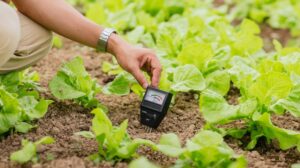 Test and adjust the pH of your nutrient solution daily to keep it between 5.5 and 6.5. This optimizes nutrient availability to the plants. Use pH up/down solutions as needed. Vigilant pH monitoring is vital for healthy roots and nutrient absorption. Test daily and aim for 5.8 – 6.2. pH issues quickly create deficiencies and toxicity leading to reduced growth and yield.
Test and adjust the pH of your nutrient solution daily to keep it between 5.5 and 6.5. This optimizes nutrient availability to the plants. Use pH up/down solutions as needed. Vigilant pH monitoring is vital for healthy roots and nutrient absorption. Test daily and aim for 5.8 – 6.2. pH issues quickly create deficiencies and toxicity leading to reduced growth and yield.
Monitor pH when first mixing nutrients, when refilling reservoirs, and before adding any new inputs. Keep detailed logs and track fluctuations. Have pH up and down solutions on hand to stabilize levels. Getting pH right from the start prevents major headaches.
Providing Adequate Nutrients
Replenish your hydroponic nutrients every 1-2 weeks, following the package directions. Check that EC/ppm levels remain in the recommended range for each crop.
Nutrient solutions are the lifeblood of your plants. Replenish them regularly as plants rapidly deplete elements they need for flowering, fruiting, and growth. Follow label instructions to mix nutrients or use pre-mixed concentrates.
Check EC or ppm levels with a meter to ensure concentrations stay in crop-specific optimal ranges. Add calcium, magnesium, and iron supplements if needed. Flush systems thoroughly between plantings to prevent salt buildups. Consistent nutrient availability ensures health and heavy harvests!
Controlling Pests and Diseases
 Beneficial insects like ladybugs or lacewings can manage pests. Identify and treat diseases early using organic methods if possible. Keep your system clean. Prevention is key to avoiding pest and disease pitfalls. Start with sterile mediums and seedlings then maintain impeccable system hygiene.
Beneficial insects like ladybugs or lacewings can manage pests. Identify and treat diseases early using organic methods if possible. Keep your system clean. Prevention is key to avoiding pest and disease pitfalls. Start with sterile mediums and seedlings then maintain impeccable system hygiene.
Inspect root zones and under leaves daily, catching issues early. Introduce predator insects or nematodes at first signs of infestation, or use organic sprays. Act fast to treat plant fungal/bacterial diseases, isolating affected plants. Strict controls mean you can avoid chemical pesticides. Losing just one plant is still better than losing an entire harvest!
Pruning and Training Plants
Prune away unhealthy growth and train vining crops upward using trellises. This improves plant shape and air circulation.
Proper pruning optimizes plant health, improves yields. Remove yellowed leaves, crowded inner growth, dead branches. Prune tomatoes and peppers for better air movement. Train vining tomatoes/cucumbers vertically on mesh, trim side shoots for straight fruits. Let lettuce and herbs grow thick then harvest outer leaves only. New growth will be bushier, more abundant with routine pruning. Always use sterile pruners, pruning seals wounds preventing disease.
Regular observation, fine-tuning, and TLC will keep your hydroponic garden vigorous! Don’t hesitate to experiment to see what works best.
Vigilance and quick corrections keep hydroponic plants thriving through multiple growth cycles. Log everything to optimize recipes and techniques season after season. Experiment with new nutrient formulas, training methods, light spectrums. Add beneficial bacteria to roots, try vertical additions. Fine tune and innovate even on a thriving system. Careful controls today mean even bigger, better harvests tomorrow!
Harvesting and Enjoying Your Hydroponic Produce
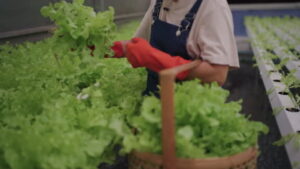 Growing your own food hydroponically is extra satisfying when you get to harvest and enjoy all that fresh flavor. Nothing beats the flavor of garden-fresh produce! Hydroponically grown fruits and vegetables often have higher Brix levels, meaning more sugar and nutrients. The controlled root zone environment stresses plants in just the right way for them to produce protective phytochemicals and antioxidants. This translates to superior, often outrageously delicious flavor compared to store-bought produce. From vibrant aromas to crisp textures, get ready for a flavor explosion!
Growing your own food hydroponically is extra satisfying when you get to harvest and enjoy all that fresh flavor. Nothing beats the flavor of garden-fresh produce! Hydroponically grown fruits and vegetables often have higher Brix levels, meaning more sugar and nutrients. The controlled root zone environment stresses plants in just the right way for them to produce protective phytochemicals and antioxidants. This translates to superior, often outrageously delicious flavor compared to store-bought produce. From vibrant aromas to crisp textures, get ready for a flavor explosion!
When and How to Harvest
Know when crops are ready to pick by checking days to maturity and signs like size and color. Use clean pruners or scissors for harvesting. Cut lettuce and herbs just above the base, leaving some leaves to re-grow.
Harvest times vary, know your plants! Refer to seed packages then watch for size and color changes. Harvest lettuce young and tender, cut just above the roots for regrowth. Allow tomatoes to fully ripen on the vine for peak flavor.
Time herbs like basil before flowers bloom for the best aroma. Taste test too – fruits and veggies signal ripeness through taste. Handle produce gently, and use clean tools to prevent disease. Stagger plantings ensure continual harvests.
Storing and Using Hydroponic Produce
 Hydroponic fruits and veggies can be used just like those grown in soil. Store properly and use quickly for maximum freshness and flavor. Blend into smoothies, juice, or add to salads, salsas, and meals. Share the bounty with friends and family! Enjoy your hand-grown bounty to the fullest!
Hydroponic fruits and veggies can be used just like those grown in soil. Store properly and use quickly for maximum freshness and flavor. Blend into smoothies, juice, or add to salads, salsas, and meals. Share the bounty with friends and family! Enjoy your hand-grown bounty to the fullest!
Proper post-harvest storage preserves freshness yet hydroponic produce is best consumed soon after picking when nutrients and flavors peak. Display colorful produce in countertop bowls, and store greens wrapped in towels inside crispers. Incorporate into every meal – add dark leafy greens to morning smoothies then dazzle dinner guests with out-of-this-world deliciousness direct from your personal garden!
Conclusion and FAQs
Conclusion
I hope this beginner’s guide has shown you how rewarding and fun it can be to grow plants hydroponically. Hydroponics allows you to produce food and flowers almost anywhere while eliminating guesswork and boosting yields. Get creative with your system designs and plant choices. The possibilities are endless! Let me know if you have any other hydroponics questions. I’m always happy to help fellow gardeners. Happy growing!
Frequently Asked Questions
1. What types of lights can I use for indoor hydroponics?
LED full spectrum grow lights work excellently to provide all wavelengths of light plants need indoors. Compact fluorescents also work well.
2. How often do I need to change the nutrient solution?
This depends on the size of your system but every 2 weeks is a good starting point. Top it off in between changes.
3. Is hydroponic gardening difficult for beginners?
It’s easy to start with a simple wick or DWC system. Getting the conditions right just takes some practice.
4. Can I use my existing nutrients or soil in a hydroponic system?
Hydroponics requires specific hydroponic nutrients to provide all the elements plants need. Don’t use soil or non-hydroponic fertilizers.
5. What can I do if my plants develop issues?
Start by testing the pH and nutrient levels. Search online or ask a hydroponics supplier for help diagnosing and correcting any problems.
